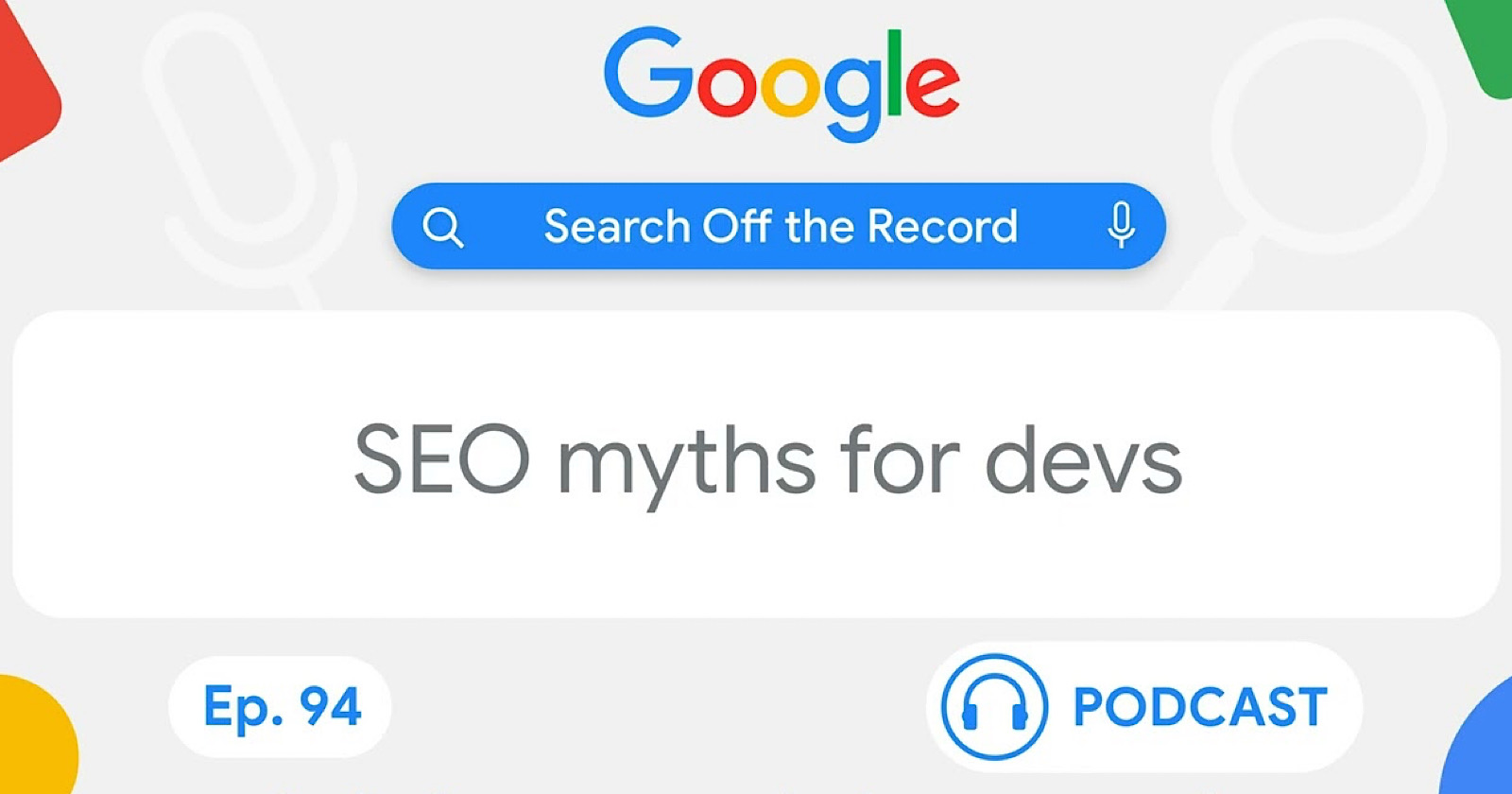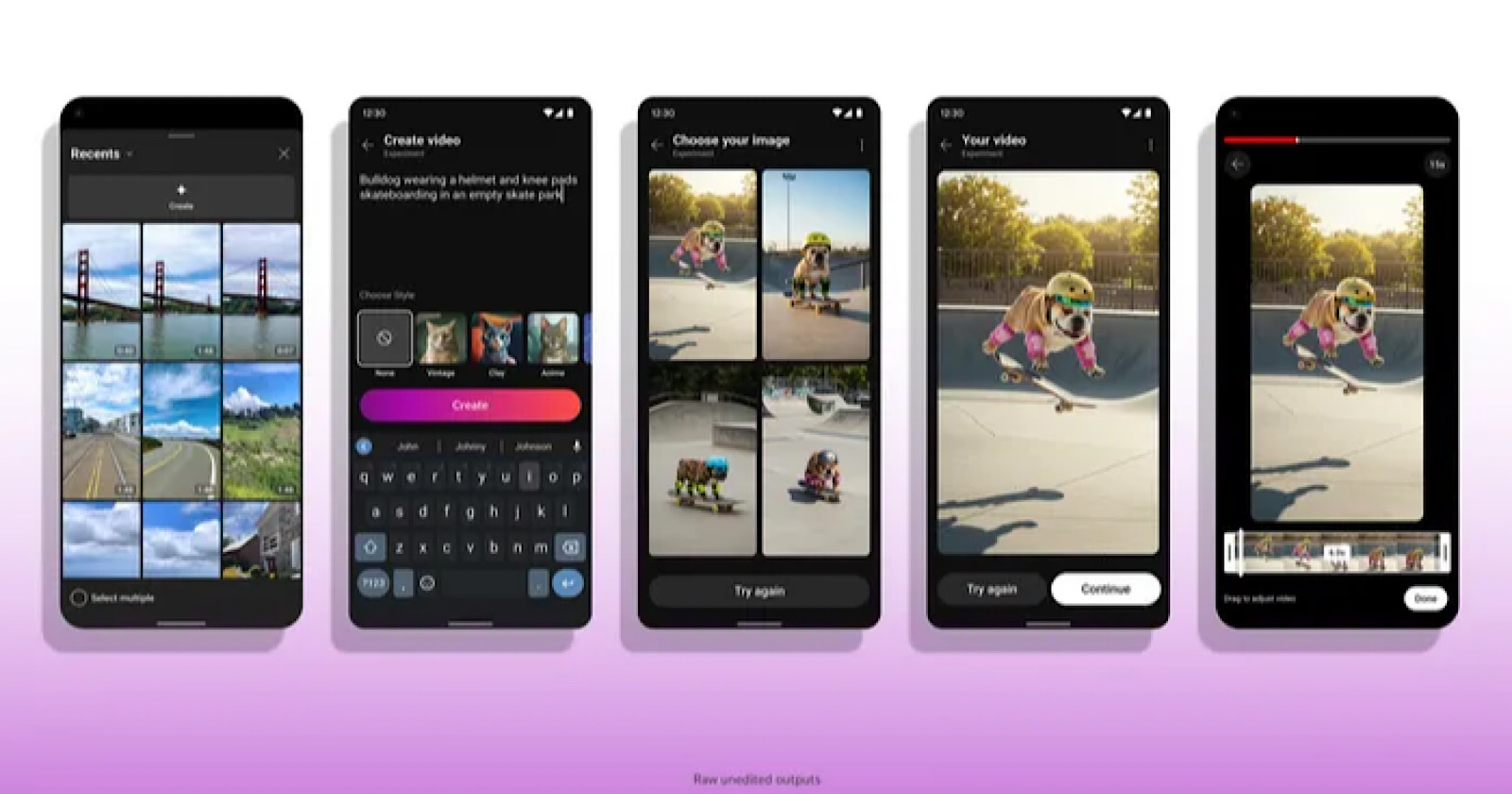PPC Keyword Research for Google Ads: A First-Timer’s Guide
When I asked experts for their #1 PPC tip for beginners (see my introduction to search ads), many said it’s smart to focus on keywords that are less popular, more specific, and cheaper. This guide will help you find...
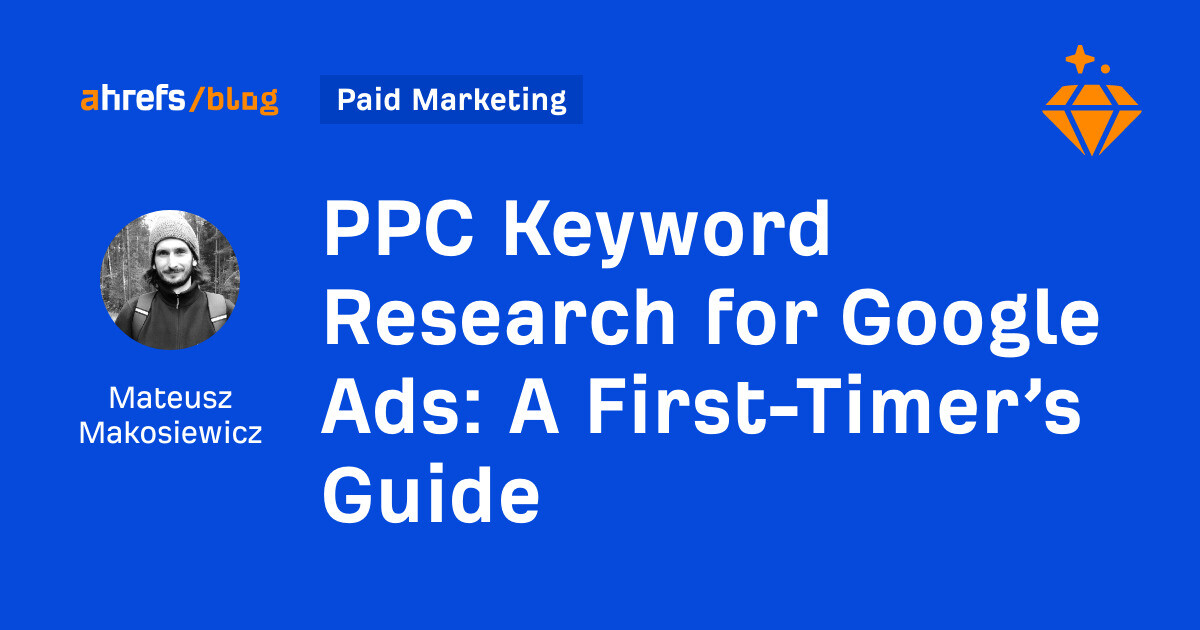
Article Performance
Data from Ahrefs
The number of websites linking to this post.
This post's estimated monthly organic search traffic.
PPC keyword research is the process of finding the exact words or phrases people type into Google when they’re looking for something related to your product or service. It helps you target the right audience, avoid wasting money on irrelevant clicks, and attract people who are actually ready to buy. When I asked experts for their #1 PPC tip for beginners (see my introduction to search ads), many said it’s smart to focus on keywords that are less popular, more specific, and cheaper. This guide will help you find those keywords, and avoid wasting money bidding on ones you already rank for organically. Google Keyword Planner is free and a popular choice for PPC keyword research, but it doesn’t always show the full picture, especially for low-volume or niche keywords. One downside of using Google Keyword Planner for PPC keyword research is that it often shows broad search volume ranges, which makes it hard to judge how popular a keyword really is. For instance, for the keyword “crypto wallet” it shows a broad range of 10k-100k searches. Tools like Ahrefs (that’s us!) can give you a clearer picture of a keyword’s popularity, making it easier to choose and prioritize the right ones for your campaign. The Keyword Planner also tends to group similar keywords together, which can result in vague or overly broad suggestions that don’t reflect what people are actually searching for, especially when you’re looking for long-tail or niche keywords. On top of that, the tool doesn’t provide data on your competitors, so you can’t see who’s bidding on which terms or how tough the competition is. All of this makes it harder to find precise, low-competition keywords that are actually worth your ad budget. That’s where a combo like Ahrefs and ChatGPT really shines. With Ahrefs, you can find more keyword ideas, get more precise volume estimates, and paid keyword reports for any competitor’s domain, and even translate for other markets on the spot. Then, with ChatGPT, you can quickly filter, cluster, and prioritize those keywords based on business value, search intent, or even funnel stage. In this guide, you’ll learn how to put this process into action step-by-step. In this step, we’ll use Ahrefs’ Keywords Explorer to find affordable keywords that people search for when they’re likely ready to buy, and that your website doesn’t already rank for on Google. Let’s start with a few broad keywords related to your business (seed keywords). You can brainstorm some yourself and use Ahrefs’ built-in AI to help expand the list. Next, go to the Matching terms report. Make sure you’re looking at results for the country where your core audience is. If you’re planning on running international or multilingual campaigns, we will translate the keywords in the following steps. Exclude keywords where you rank in the top 10 and select intents: commercial and transactional. The two intent types typically mean the searcher is close to making a purchase. You can also filter out expensive keywords using the CPC filter. If you’re not sure how much you should pay for a click, you can figure out your maximum CPC with some simple math: Finally, select all keywords and add them to a new keyword list. Tip If your organic rankings are close to the top 10, you can optimize your content to move up. But you could also bid on those keywords in the meantime. Since you already rank for them, your ads will likely get a higher relevance score. Including your competitors’ PPC keywords in your research is a smart move because it gives you a shortcut to what’s already working in your market. Here’s how to do that: Add the results to your keyword list. Repeat for each competitor. Tip Here at Ahrefs we’ve just released the Paid Keywords 3.0 report. It shows which ads your competitors ran over the past month. Use it if the regular Paid Keywords report doesn’t return enough ads or whenever you want a broader view from the start. Now that we have a list of keyword candidates, it’s time to carefully choose the ones that will give you the best return for your budget. If you’re working with a small keyword list—let’s say under 100 keywords—you can go through each one and simply ask yourself: could someone searching for this keyword be ready to buy my product or service? But if your list is bigger, it’s a good idea to use a simple scoring system to stay organized. My simple Intent-Fit Framework will help you give each keyword a score in two categories: commercial intent and product fit. Export the keywords from Ahrefs and import them into your favorite spreadsheet tool. Add a column for each scoring category (Commercial Intent and Product Fit), plus one more column to total the scores. Then, go through the list and start assigning scores for each keyword. If your keyword list is too large to review manually, you can score the first dozen keywords yourself, then ask ChatGPT to complete the rest based on the patterns you set. Here is a CSV with keywords. Commercial Intent and Product Fit are both scored 1–3; the first 10 rows are already scored. Learn from them, then fill in the missing CI and PF scores for the rest and return the completed CSV only. Now that we have selected the best keywords, it’s a good moment to translate them if you’re planning on multilingual campaigns. A good option is to ask your favorite AI to handle the translation. But an even better choice is to use Ahrefs since it can show you different expressions and variations that mean the same thing and account for different dialects. To translate your keyword list into different languages in Ahrefs, open your keyword list and click the Translate button. In this step, we’ll handle three important tasks to get you ready for your first Google Ads campaign: The easiest way to do that effectively is by using AI. Export your list from Ahrefs and import it into ChatGPT or any other LLM. Use this prompt: As a result, you will get a preview and a full list of keywords in a csv file and you’re ready to set up your Google Ads. But before we wrap up, you should know about and plan for two special Google Ads tactics: bidding on your own branded keywords and your competitors’ branded keywords. Even though it sounds odd to pay for clicks when people are already searching specifically for your brand, bidding on your own branded keywords can be worth it. These ads are usually cheap and let you control exactly what people see, like highlighting special offers or sending visitors straight to the best page. It also blocks competitors from showing up above you and stealing clicks meant for you. However, if your budget is tight and no one else is bidding on your brand, it might make sense to skip branded ads for now and focus on more competitive keywords that bring in new traffic. So, if you want to find branded keywords where your competitors show ads, use the SERP features filter in Keywords Explorer. Set it to show ads at the top and bottom of the SERP. Bidding on your competitor’s branded keywords is a bold way to reach high-intent searchers. It gives you a chance to introduce your brand as an alternative and highlight what makes you better, like lower pricing, unique features, or a free trial. However, it comes with risks. Click-through rates can be low, costs per click can be higher due to lower ad relevance, and you can’t use the competitor’s name in your ad text without risking policy violations. This tactic can work well if your offer is clearly different and your brand has enough credibility to compete, but it’s best used as a completely separate tactic, not as a core part of your campaign, especially if your budget is tight. To find potential keywords for this kind of campaign, plug in your competitors’ brand name in Keywords Explorer, go to the Matching terms, and use the Middle and/or Bottom of the funnel preset. This filter will uncover keywords with a likely buying intent behind them. PPC keyword research doesn’t have to be perfect to be effective. The most important thing is to get started, launch your first campaign, and learn from the data. Over time, you’ll refine your keyword choices, targeting, and strategy based on real results. Got questions or comments? Let me know on LinkedIn.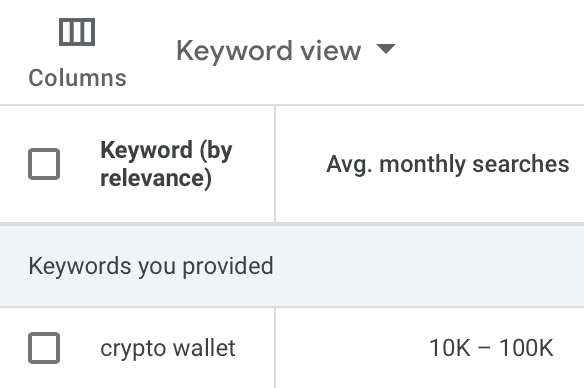

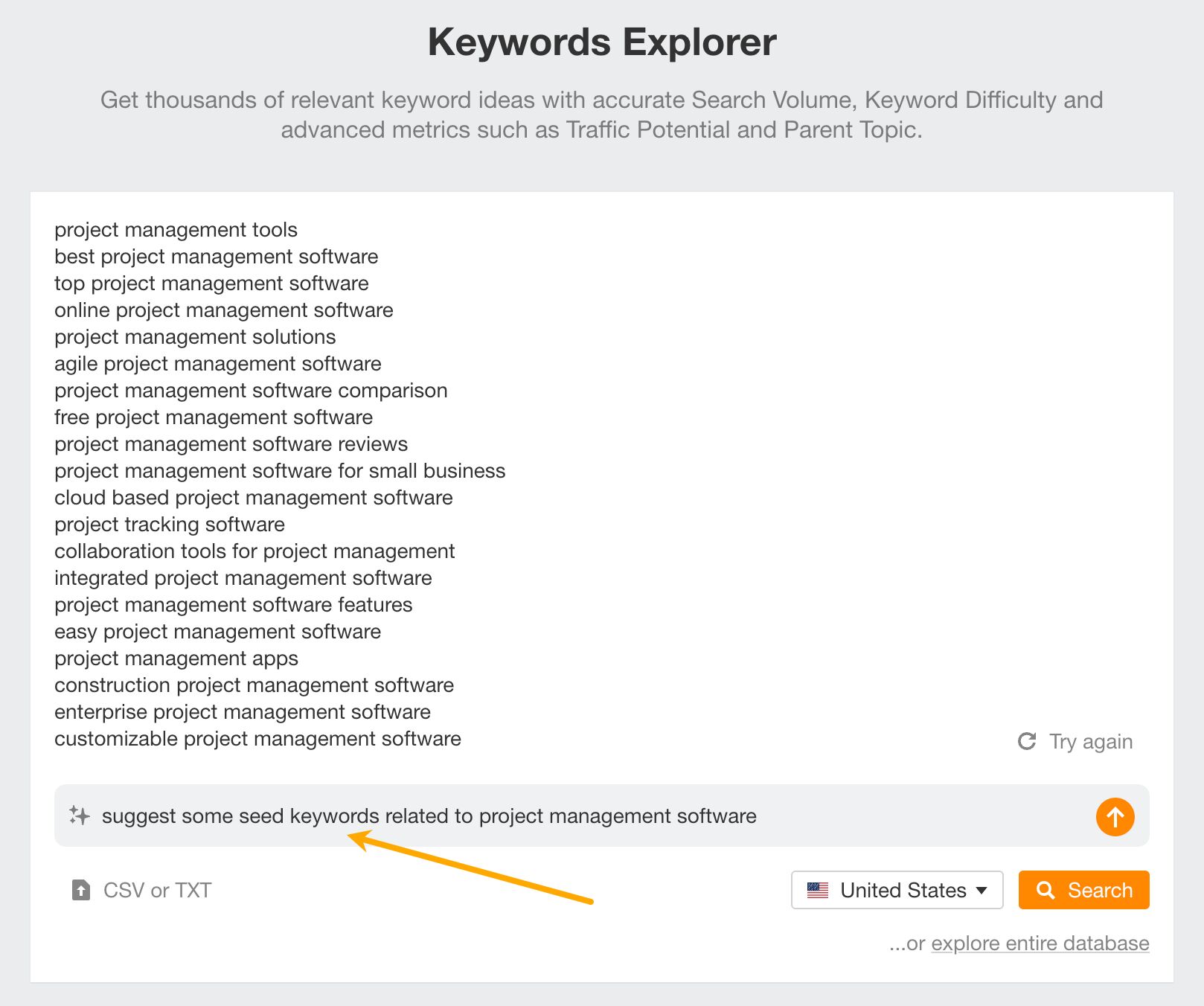
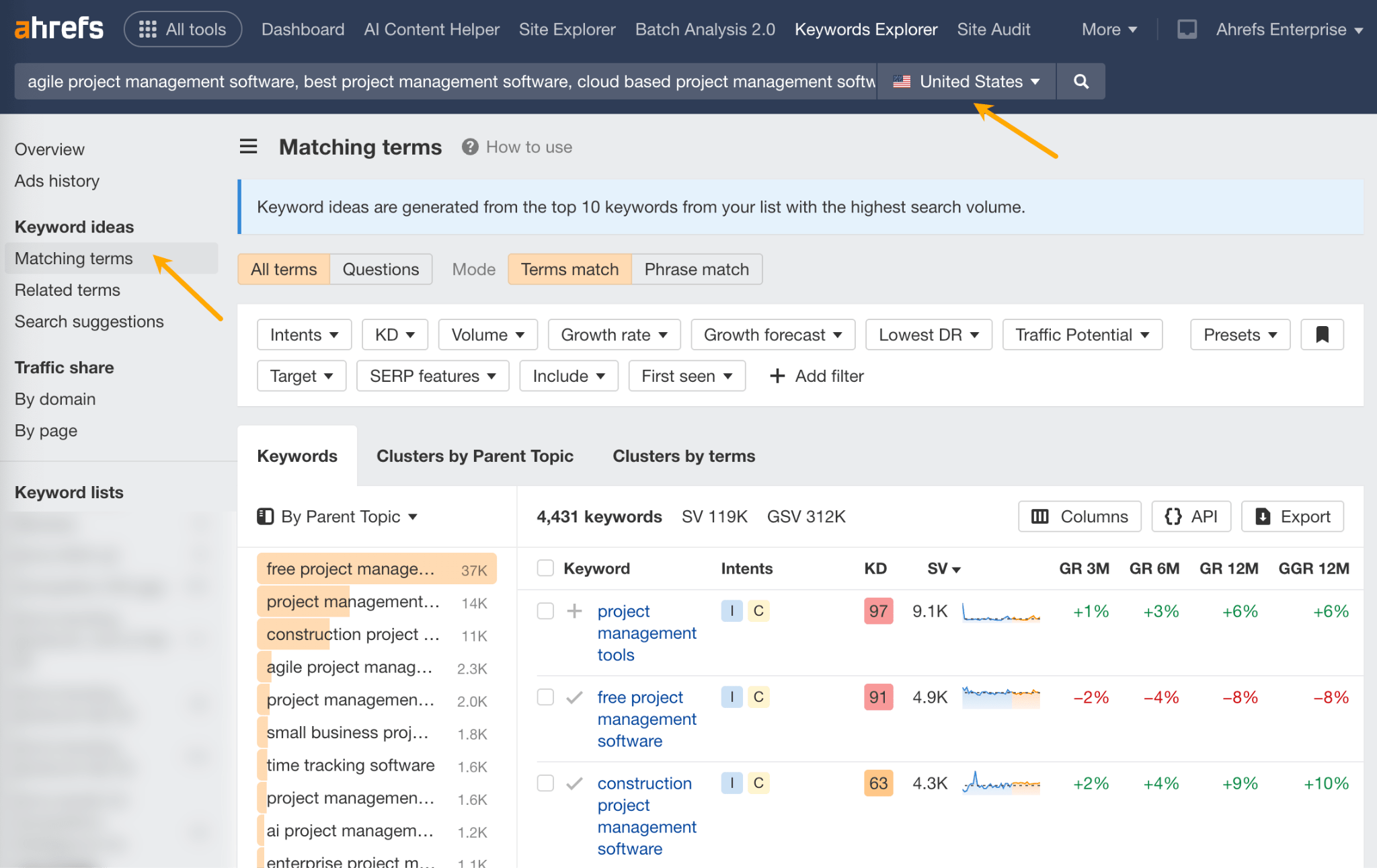
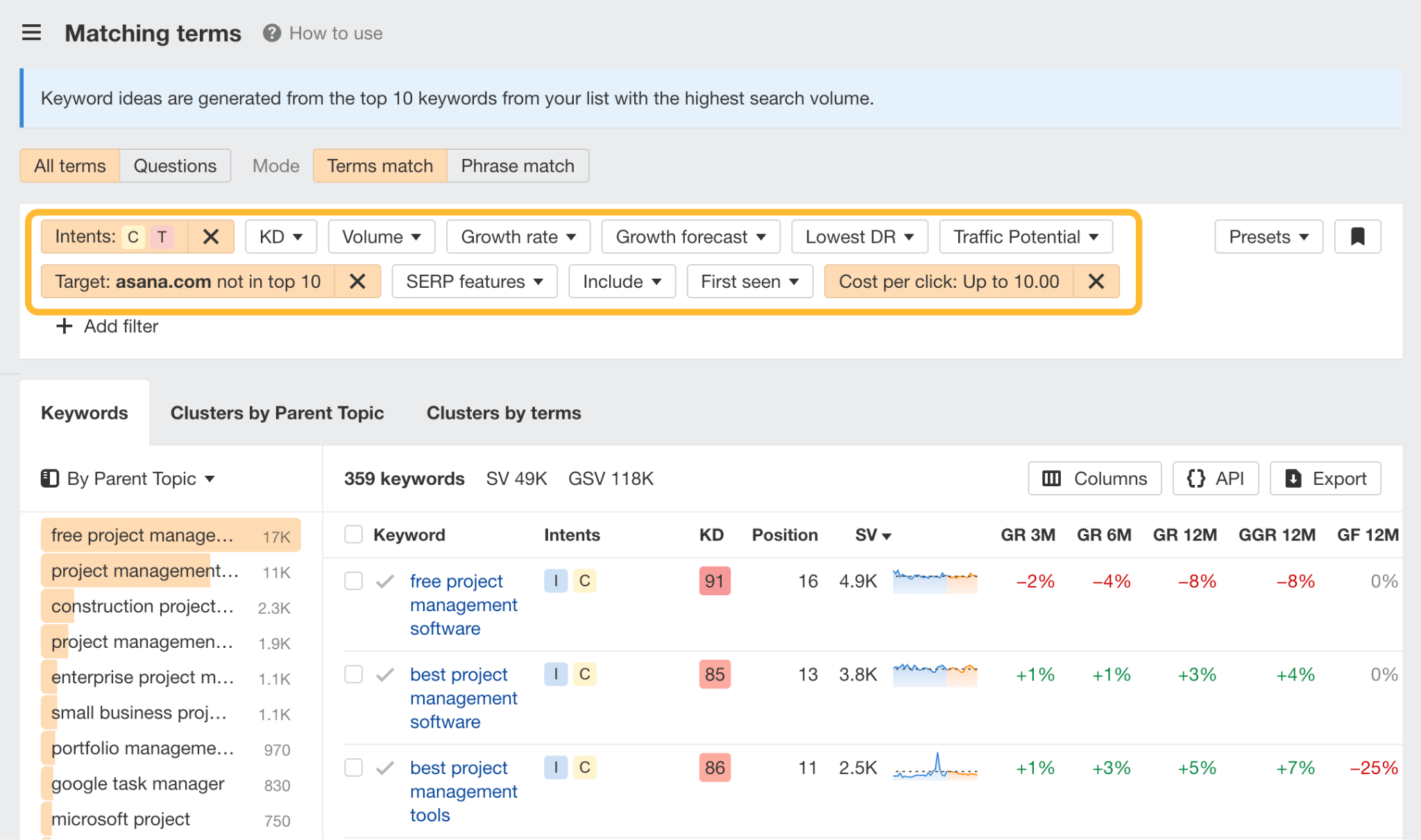
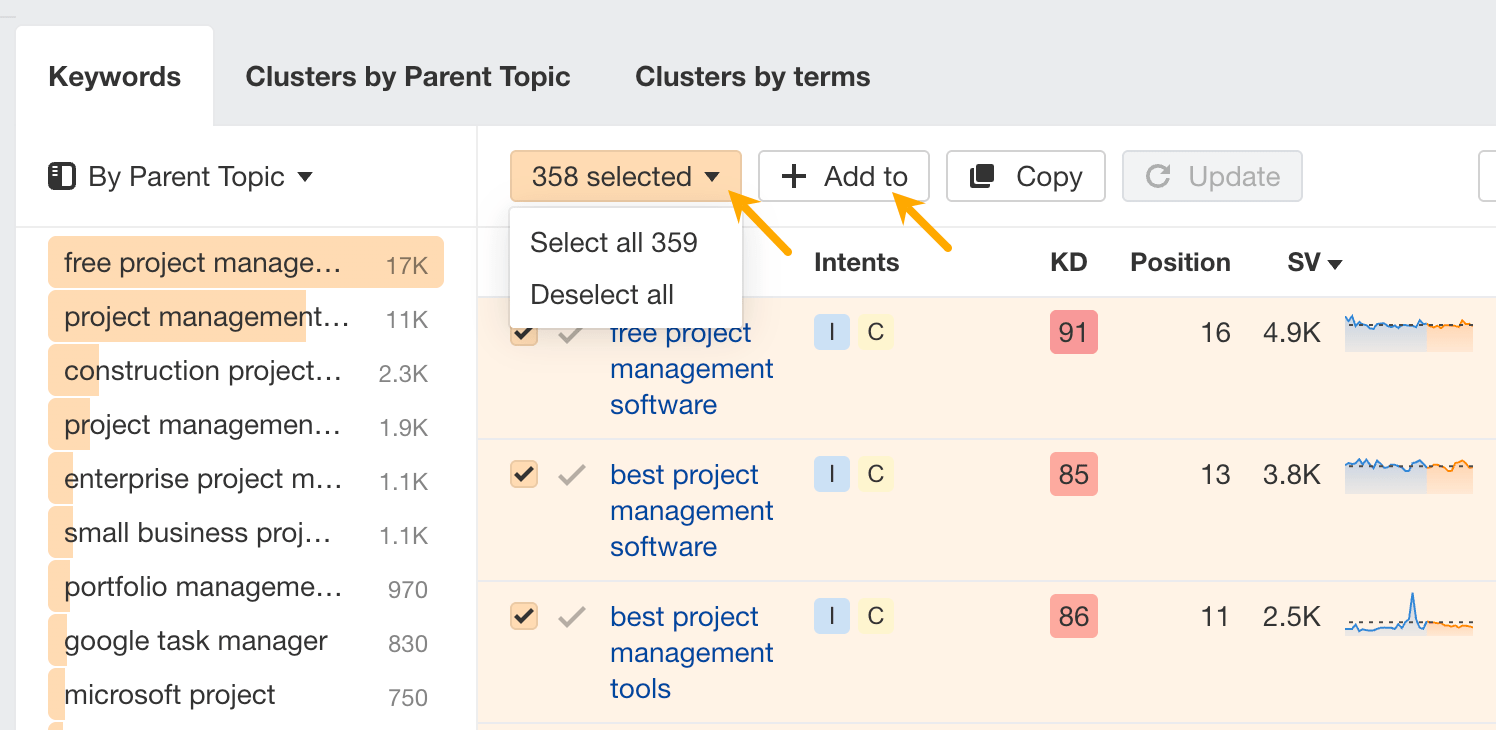
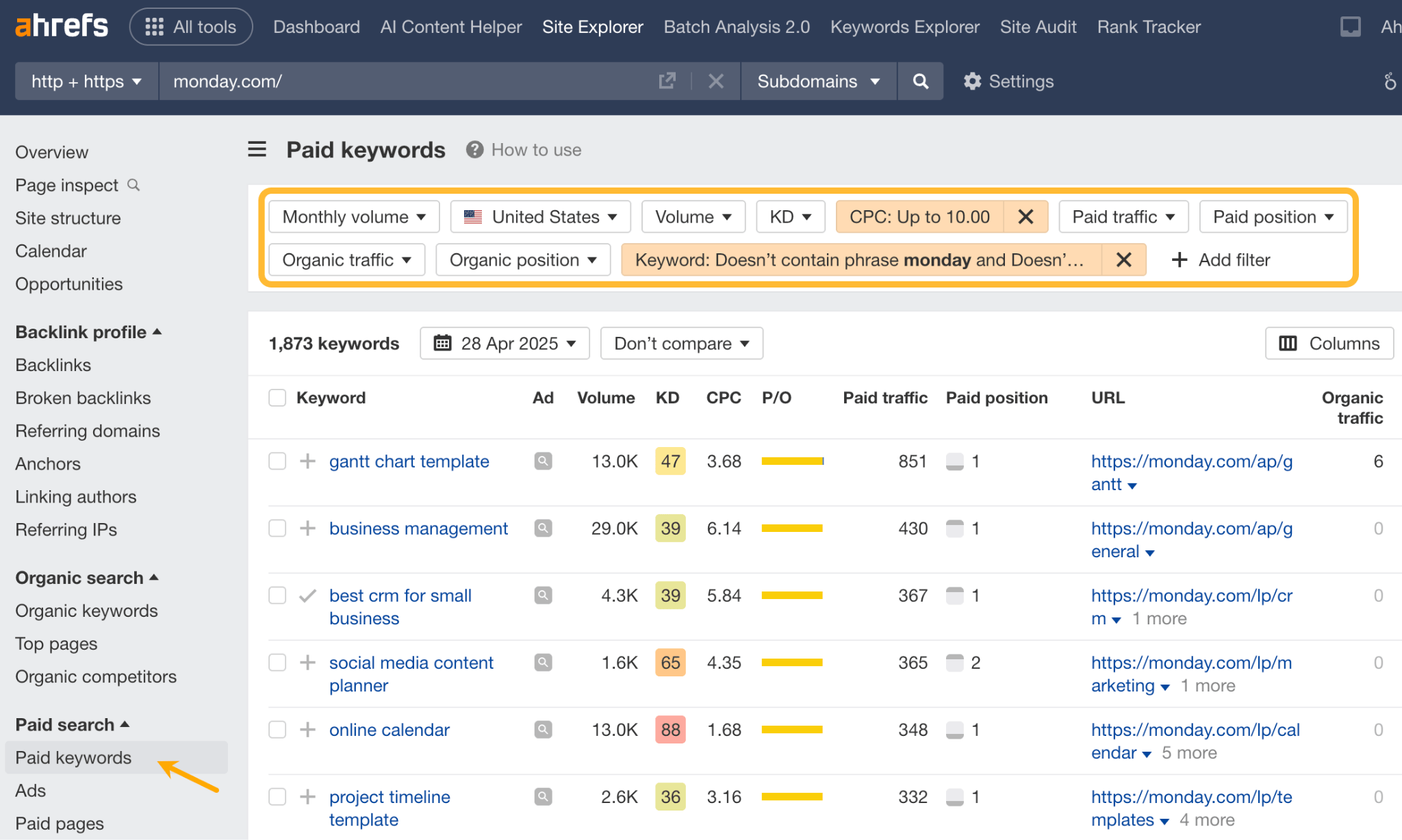
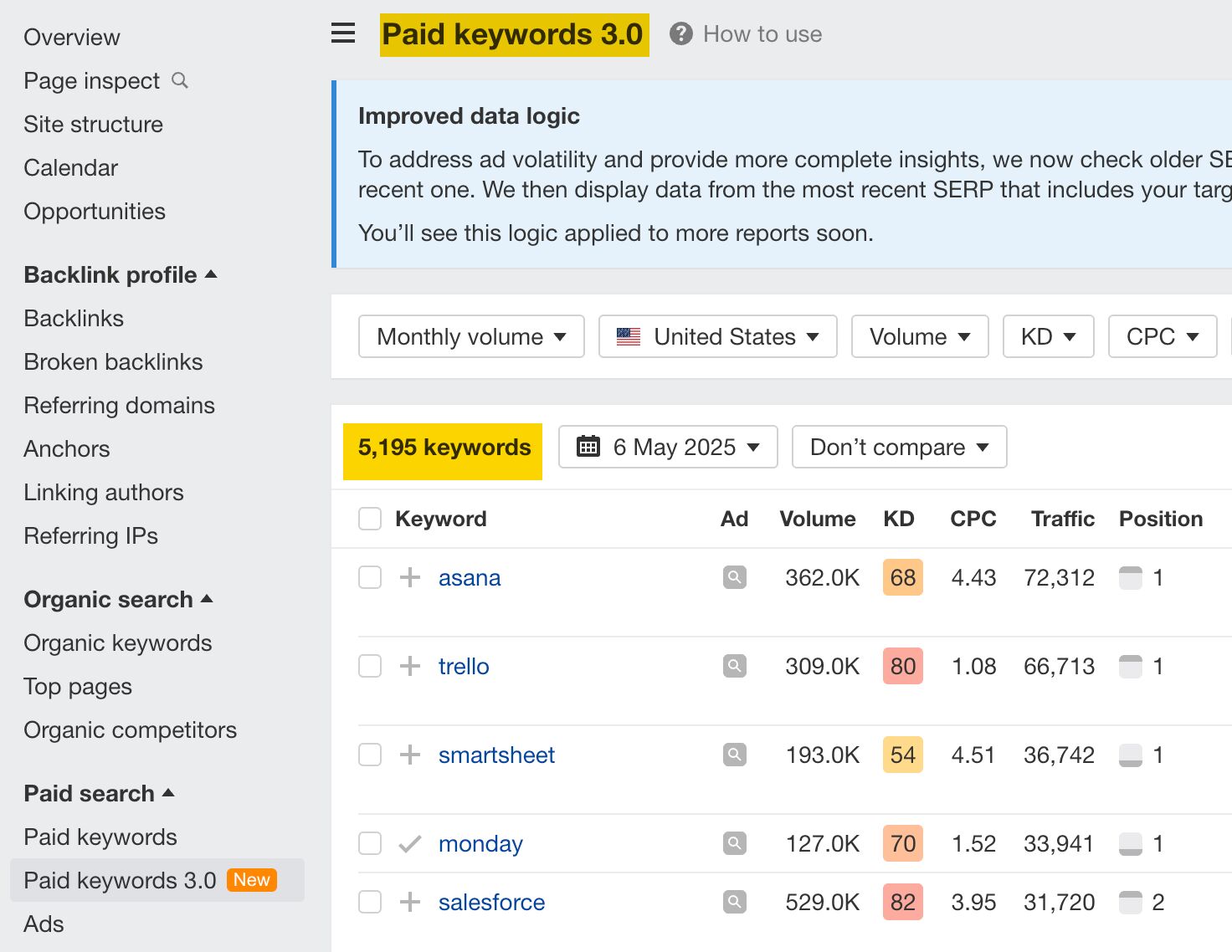
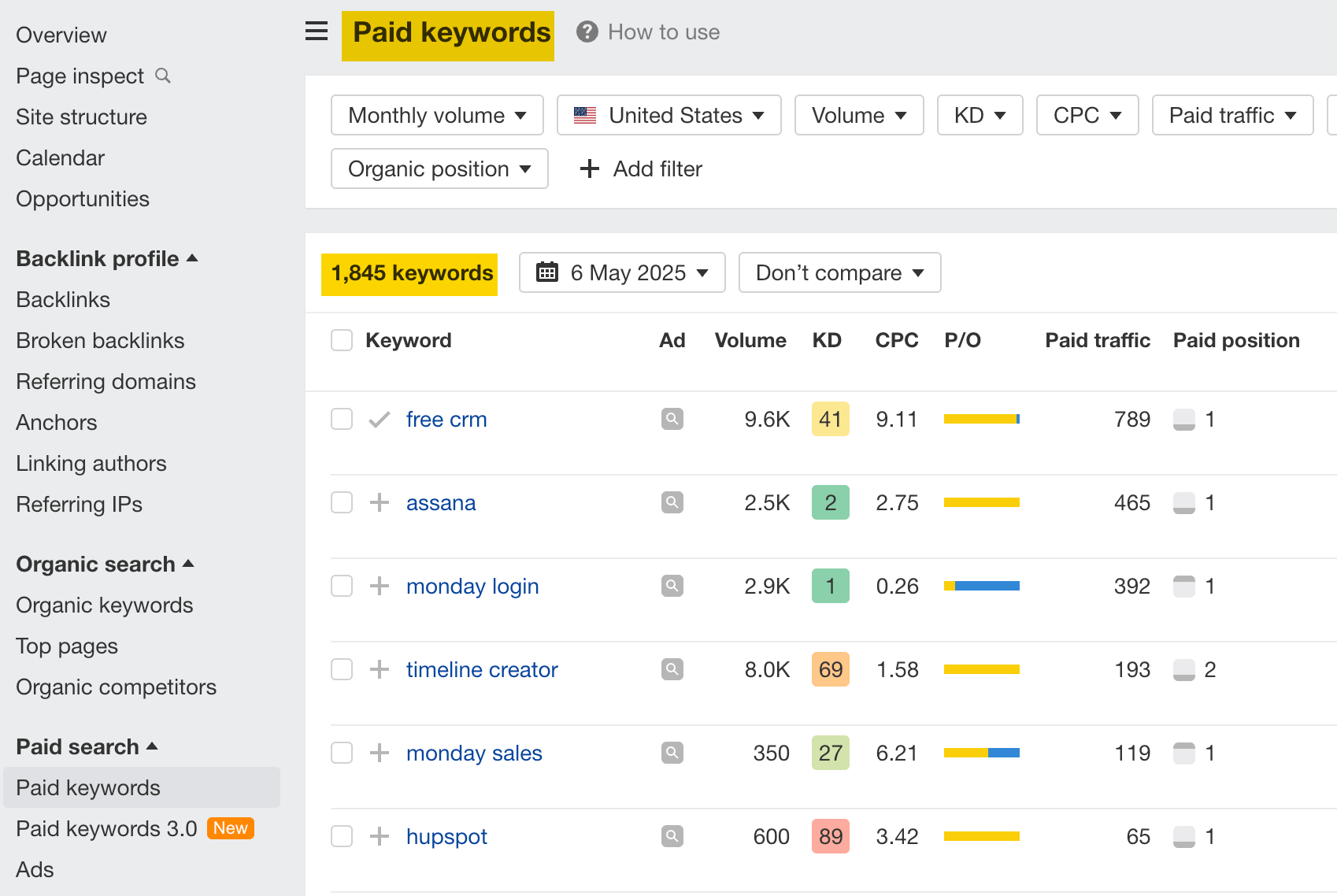
CategoryScoreDescriptionExamples Commercial intent 3 High: Searcher is clearly ready to buy buy [product], [product] pricing, hire [service] 2 Medium: Some buying interest, but not immediate best [product], compare [tools], top [services] 1 Low: Research or awareness stage; not purchase-focused what is [product], how does [service] work Product fit 3 Strong fit: Exactly matches what you sell You sell task management software, and the keyword is ‘task management tool’ 2 Partial fit: Related, but not your core offering You sell project management software, and the keyword is ‘team collaboration tool’ 1 Weak fit: Not clearly about what you offer You sell HR software, and the keyword is ‘how to build company culture’ 

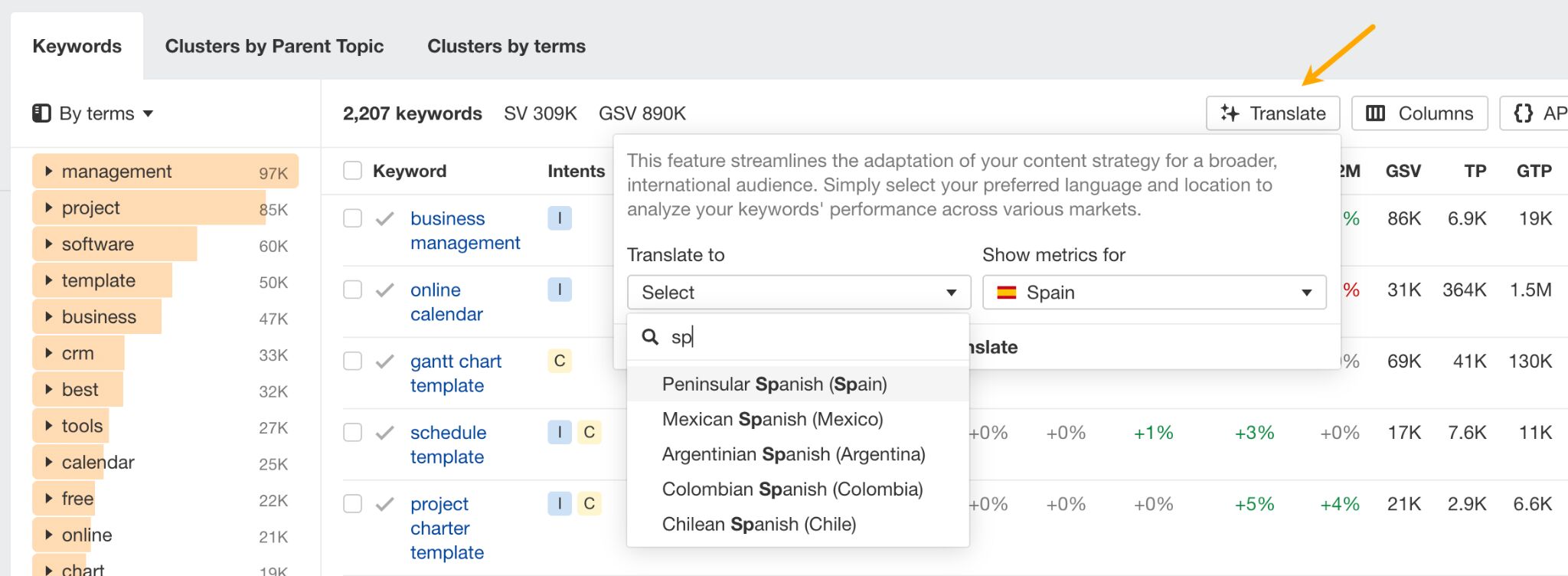
 Your keywords are now ready to be added to your ad groups.
Your keywords are now ready to be added to your ad groups.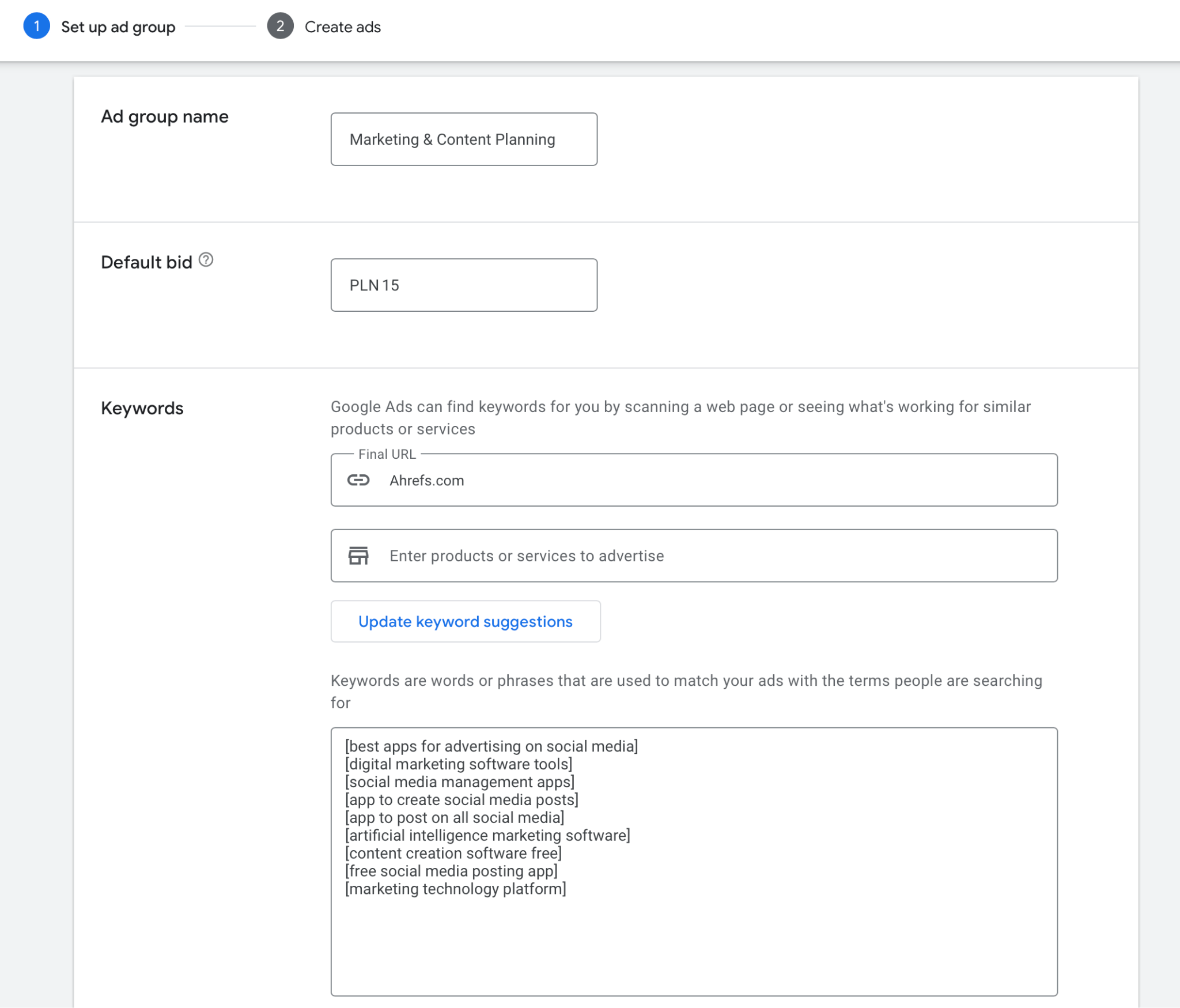
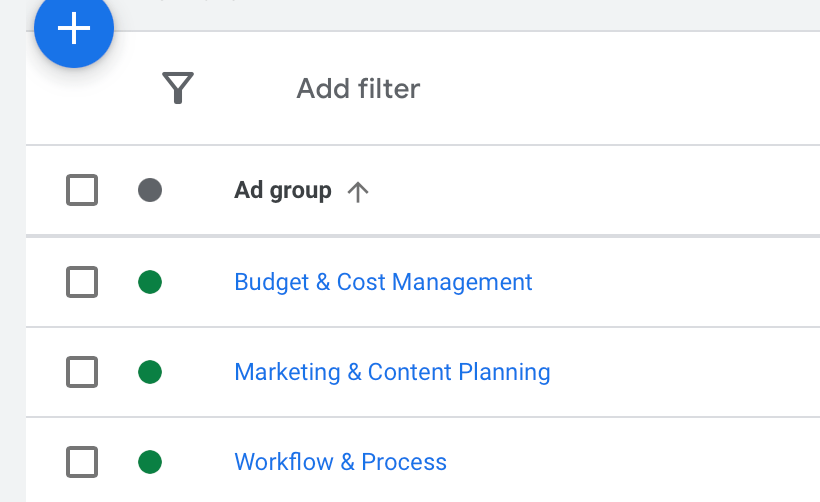
 If not for the ad, the organic link to asana’s homepage would be buried under competitor’s ads.
If not for the ad, the organic link to asana’s homepage would be buried under competitor’s ads.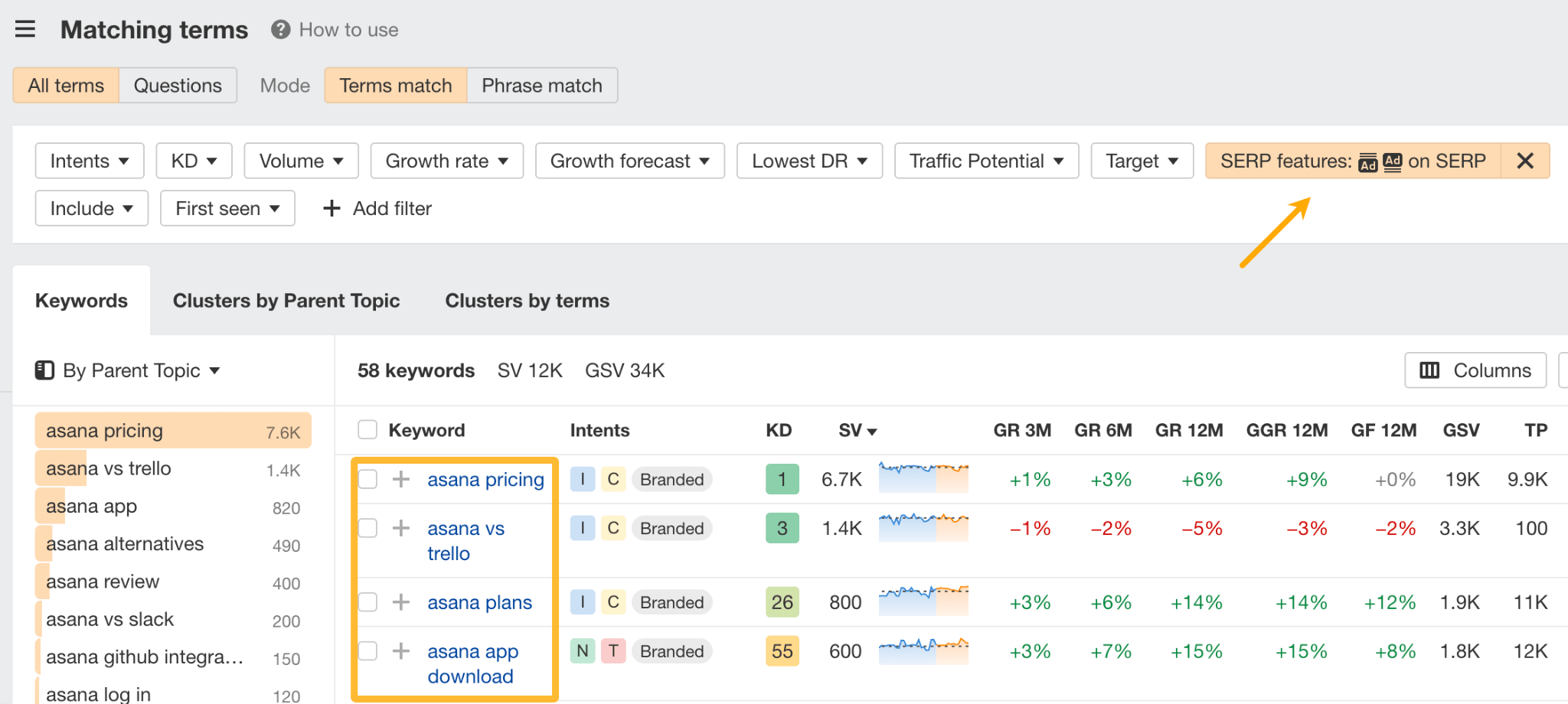
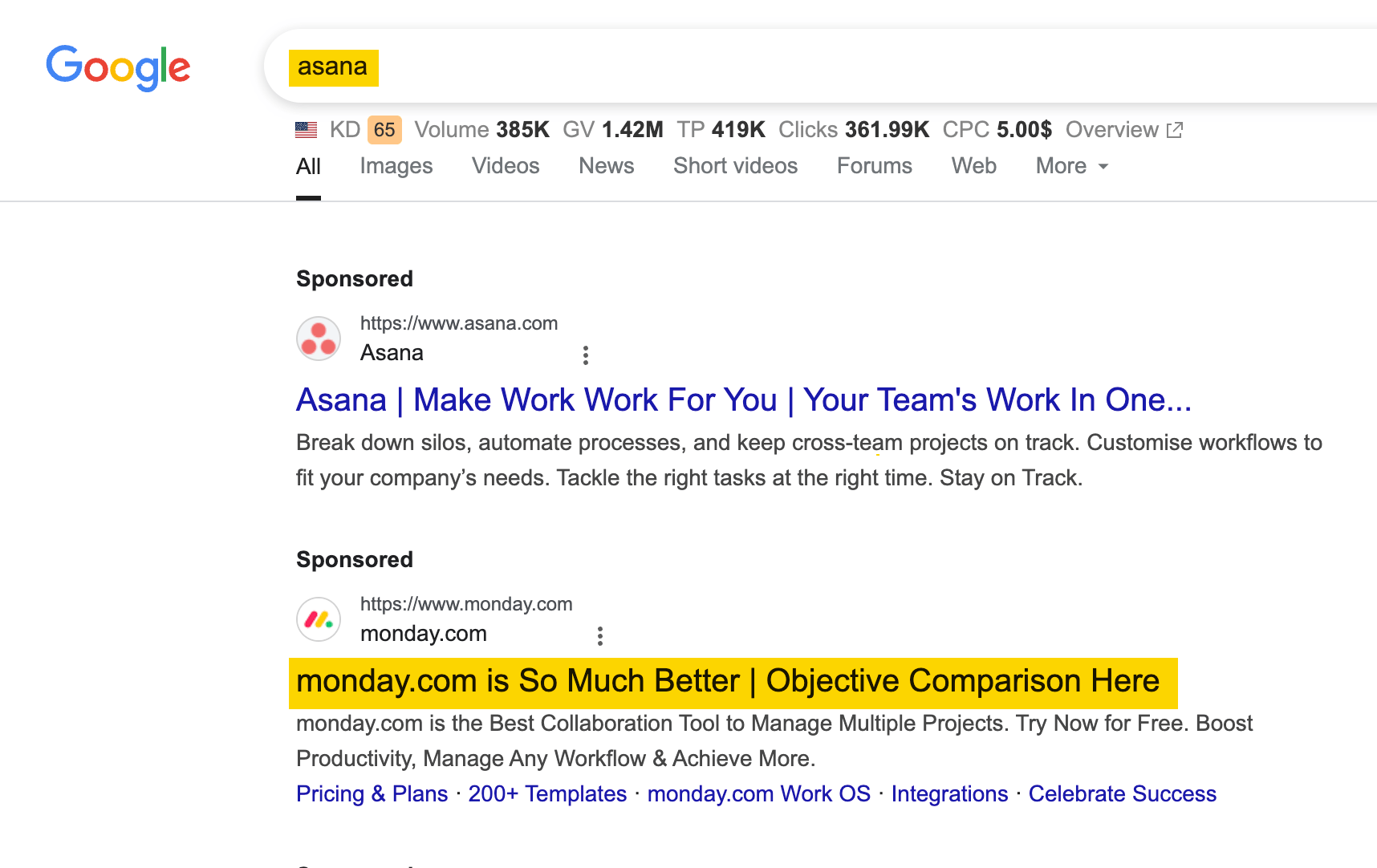
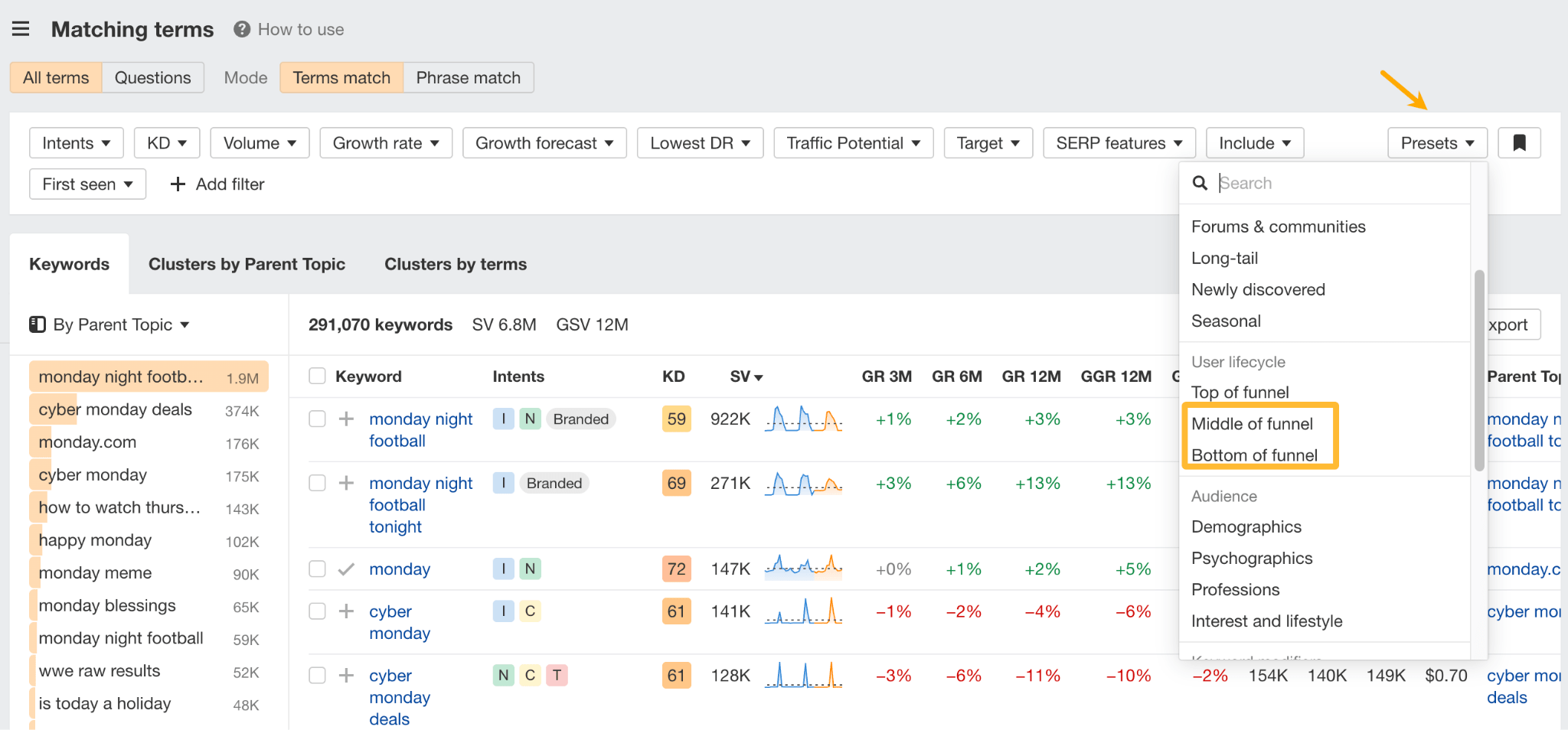
Final thoughts

 Konoly
Konoly 











